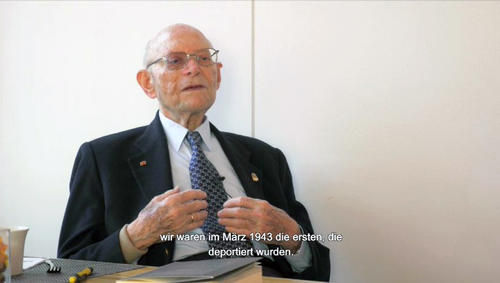Heinz Kunio
The Jewish community of Thessaloniki is one of the oldest in Europe. It expanded starting in 1492 as a result of the expulsion of the Sephardic Jews from Spain. Before the Second World War, approximately 45,000 Jews lived in Thessaloniki, comprising two-thirds of the population. On February 8, 1943, the Nuremberg Laws were introduced in Greece. Wearing a yellow star became mandatory. Until February 25, 1943, the Jewish population was crowded together in ghetto districts. In March, the first trains left for Auschwitz with 2,600 people on board, including Heinz, his father Salvator, his mother Hella, and his sister Erika. Heinz Kunio (born in 1927) was 15 years old when he and his family were deported to Auschwitz from Thessaloniki. The Sephardic Jew managed to survive because he could speak German.
Between March 15 and August 10 of 1942, 19 mass deportations of approximately 2,800 people each left Thessaloniki. 18 of these ended at Auschwitz, while the last deportation went to Bergen-Belsen. Altogether, approximately 45,000 people were deported from the German occupied part of Macedonia, including the small Jewish communities in West and Central Macedonia. The overwhelming majority of them were immediately led to gas chambers upon their arrival at Auschwitz. When he was freed in May of 1945, Heinz Kunio could no longer walk independently and was emaciated to the point of resembling a skeleton.

